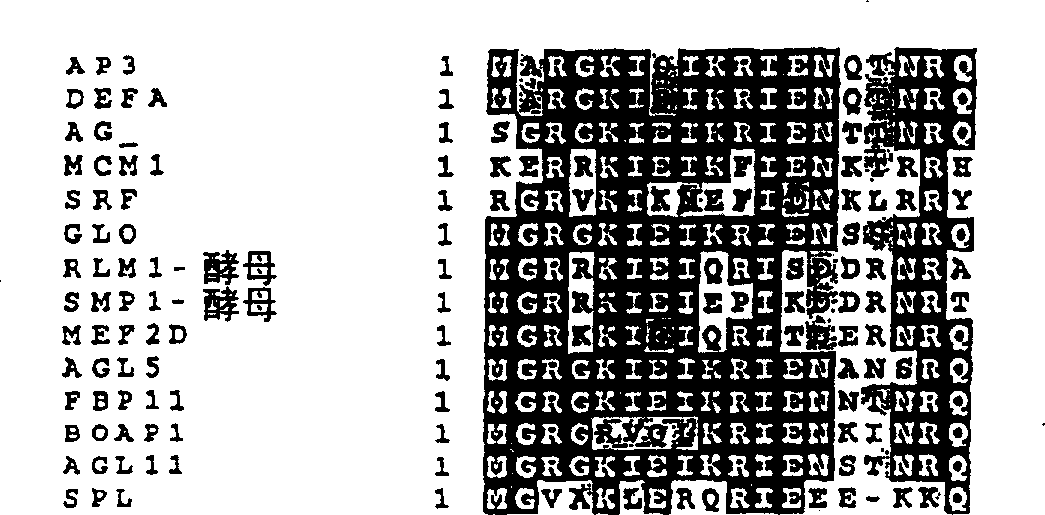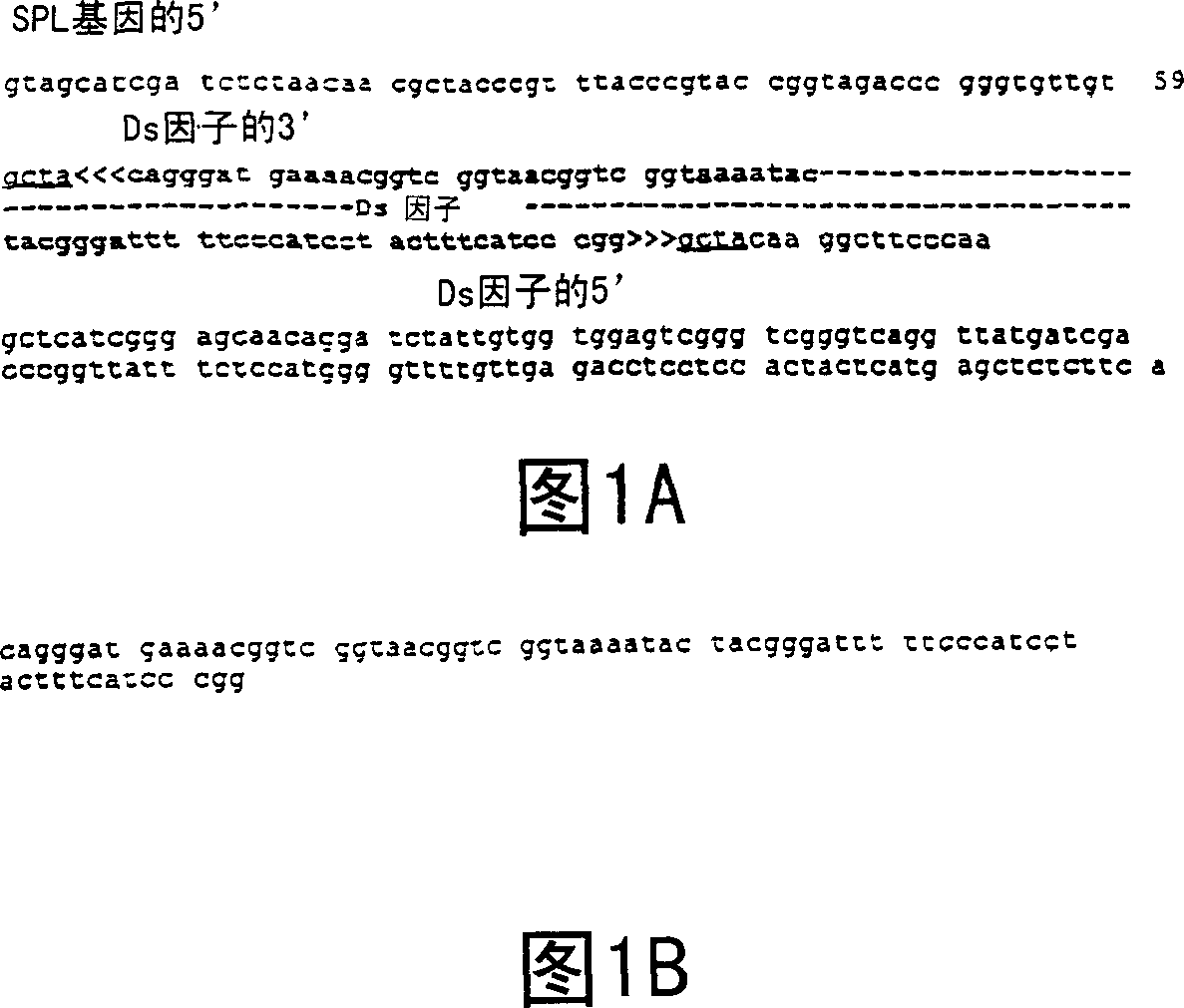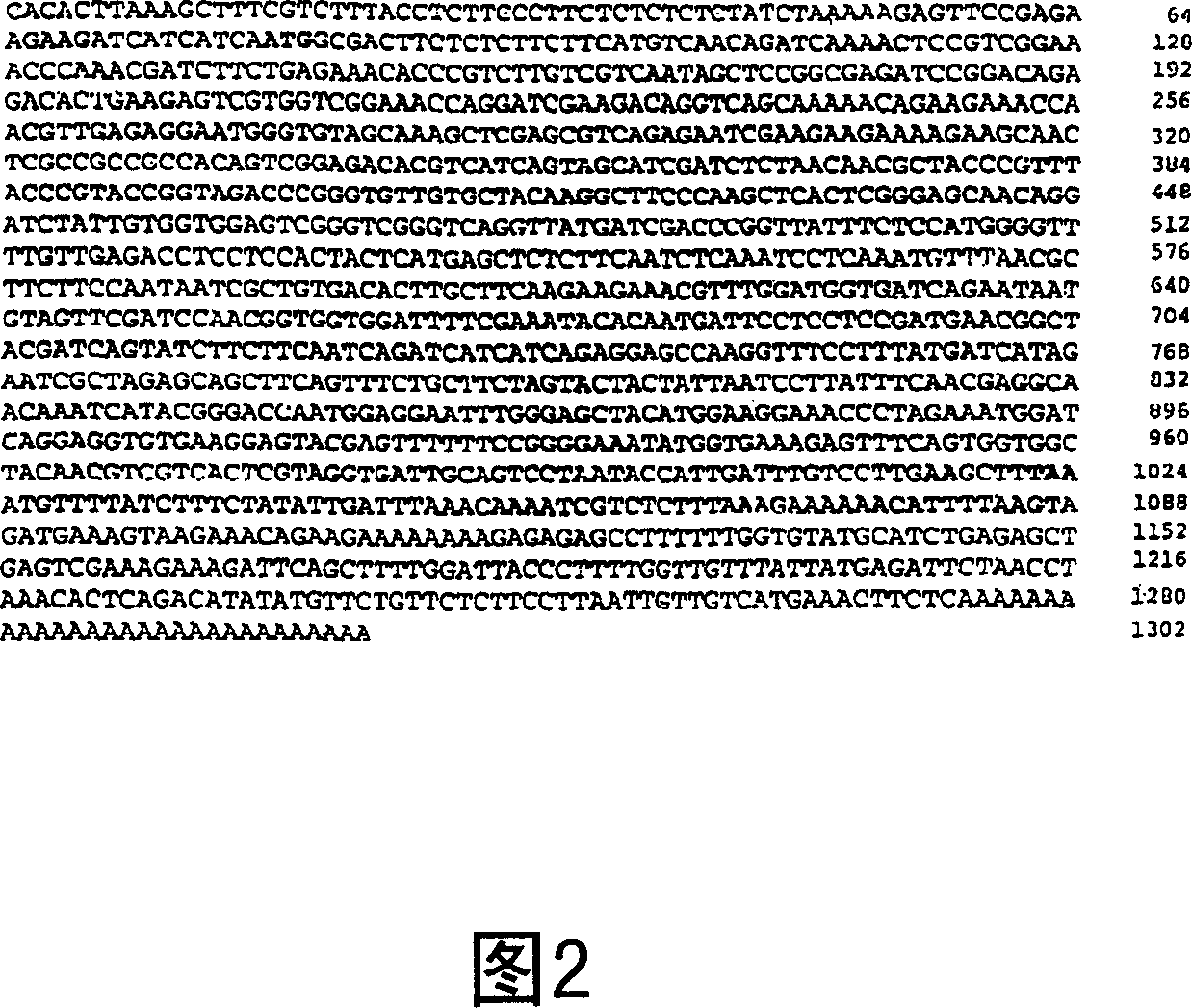Control of sporocyte or meiocyte formation in plants
A mother-cell, plant-based technology, applied to the field of proteins, can solve poorly understood problems
- Summary
- Abstract
- Description
- Claims
- Application Information
AI Technical Summary
Problems solved by technology
Method used
Image
Examples
Embodiment 1
[0107] Example 1. Transposon tagging
[0108] Plants were grown at 22°C under a 16 hr light / 8 hr dark cycle in a greenhouse at the Institute of Molecular Bioagriculture (1 Research Link, Singapore). Starting lines containing Ds or Ac segments are crossed and F2 seeds are screened for transposants, such as Sundaresan. V. et al., 1995, Genes and Development, 9 "1797-1810. The spl mutant gene was identified from the transposon collection by its male and female sterility phenotype. Genetic analysis was performed using techniques known in the art. The spl mutation is shown The gene is recessive and results from a single-Ds insertion. The phenotype of the spl mutant gene is determined by standard cytological methods, such as McCully, M.E., 1981, Plant Architecture Studies: Principles and Selection Methods, Termarcarphi, Melbourne, and whole slides The clearing method was identified as described by Herr, J.J.M., 1982, Staining Techniques 57: 161-109.
Embodiment 2
[0109] Example 2 DNA Analysis
[0110] DNA analysis was performed essentially as described by Sambrook J. et al., 1989, A Laboratory Manual of Molecular Cloning, published by Cold Spring Harbor Laboratory, Cold Spring Harbor Laboratory, New York.
[0111] For Southern blot analysis, 100-200 ng of Arabidopsis DNA was extracted from flower buds, digested with EcoRI, Hind III or XbaI, electrophoresed on a 1% agarose gel, and then transferred to a nylon membrane. Ds probe, an EcoRI fragment at the 5' end of the gene trap construct, DsG (see V. Sundaresan et al., Genes and Development 9: 1797-1810 (1995)), was digested with EcoRI by digesting plasmid pWS31 containing part of the Ds factor , and the resulting fragments were separated by electrophoresis. The 1.8kb EcoRI fragment of the 5'Ds factor was excised from the gel, and the Rediprime kit purchased from Amersham was used. 32 P-dCTP labeled, labeled fragments were used to probe Southern blots under standard DNA hybridization c...
Embodiment 3
[0113] Example 3 RNA Analysis
[0114] Northern blot analysis of polyA+ RNA from various Arabidopsis tissues was performed using the 1 kb Hind III fragment of the cDNA clone shown in Figure 2 (SEQ ID NO: 1) as a probe. RNA was extracted from different tissues using standard methods, and 10 μg of polyA+ RNA from each sample was electrophoresed on a 1% agarose gel and blotted onto a nylon membrane. The membrane is then used 32 P-dCTP-labeled probe hybridization.
PUM
 Login to View More
Login to View More Abstract
Description
Claims
Application Information
 Login to View More
Login to View More - R&D
- Intellectual Property
- Life Sciences
- Materials
- Tech Scout
- Unparalleled Data Quality
- Higher Quality Content
- 60% Fewer Hallucinations
Browse by: Latest US Patents, China's latest patents, Technical Efficacy Thesaurus, Application Domain, Technology Topic, Popular Technical Reports.
© 2025 PatSnap. All rights reserved.Legal|Privacy policy|Modern Slavery Act Transparency Statement|Sitemap|About US| Contact US: help@patsnap.com



